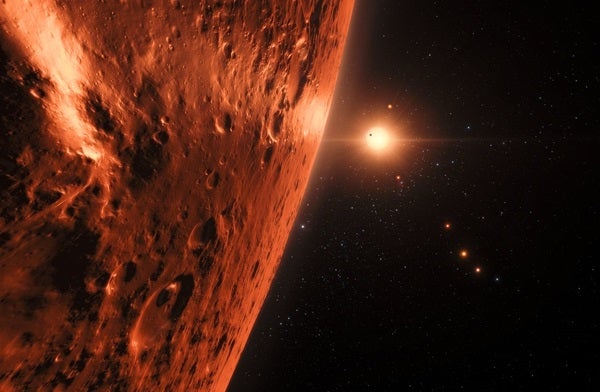TRAPPIST-1 is a never ending roller coaster planetary system. The seven planet system might have at least three habitable planets — that is, unless solar flares wipe any atmosphere or traces of water away.
But new evidence from the Hubble Space Telescope at least paints a sunnier picture for the planets. A team led by Observatoire de l’Université de Genève studied the amount of ultraviolet radiation received by each planet. Ultraviolet radiation can be a boon for catalyzing life, but too much can also spell death.
The results aren’t promising for two of the inner planets, but the most promising habitability candidates — e, f, and g — seem to be in the right place to hold onto water in their youth. The inner planets, if they formed with any water, may have lost more than 20 times all the ocean water on Earth in the most active period of their stars’ life. But e, f, and g would receive just enough radiation to wipe less water away, essentially leaving some behind, and possibly dodging the more intense flares that can destroy an atmosphere.
This all compounds the complicated puzzle of TRAPPIST-1, which volleys back and forth between “can or can’t it support life.” The answer may come from the James Webb Space Telescope, set to launch next year. TRAPPIST is high up on the list of exoplanets for the tennis court-sized telescope to peek at next year. Hopefully it an put to rest the questions and start churning out some intriguing answers.










